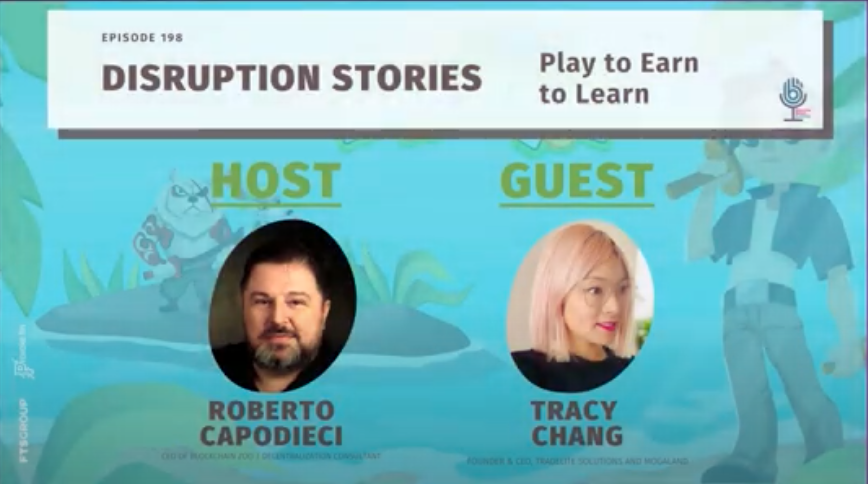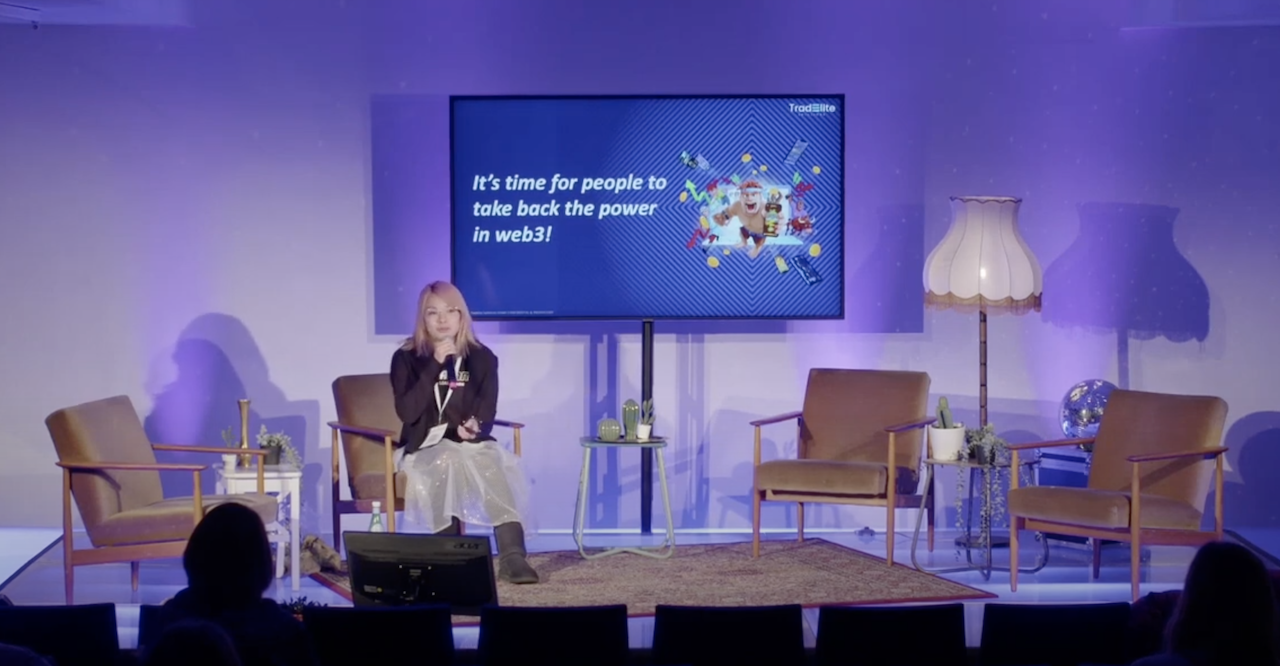Tradelite
Switch up the game
“Anyone who makes a distinction between games and education clearly does not know the first thing about either one.”
Marshall McLuhan (Canadian communication theorist and educator)
Games and learning have always been closely intertwined in human cultures. This link also exists in the animal kingdom, manifesting itself, for example, in the fighting and hunting games of young mammals. The evolutionary link between play and learning is thus the natural state of affairs, and it is only the institutionalized forms of higher education and learning environments that abolished it and solidified the clear separation between learning (work) and play (leisure).
The fact that this separation is not irrevocable is shown by the numerous attempts of modern pedagogy to (re)unite play and learning. Since the 1980s, the combination of learning content with playful or entertaining elements has become a central topic in pedagogy, psychology, and related disciplines concerned with teaching and learning under the buzz word “edutainment.”
In the early 2000s and with the advancement of information technology and online learning, the term “edutainment” was replaced by “digital game-based learning” (hereafter DGBL), in the wake of Marc Prensky’s (American author who coined the term “digital native”) publication of the same name.
What does it mean to use digital games as an instructional medium?
Marc Prensky describes DGBL as “any marriage of educational content and computer games.”
The fundamental link between educational games and DGBL is the goal of harnessing the specific properties of digital games for purposes beyond entertainment, fun and distraction.
These key points capture the characteristics of digital games as learning tools:
- Interactivity
- Multimedia
- Involvement
- Challenge
- Reward
- Social experience
All these characteristics enable learning experiences that cannot be achieved in this form with other instructional media or most formal instruction via textbooks. The interactivity in game-based learning (DGBL) enables a close coupling of learning and direct experience.
In addition, players receive immediate and continuous feedback on their performance. Unlike traditional instruction, learning from mistakes, restarting, and repeating are natural elements of DGBL that are not or should not be punished.
The engagement that computer and video games require from their players facilitates the maintenance of interest and reduces the risk of distraction from other environmental stimuli. The challenges in the game mean that a flow experience can be created and learners need not feel over- or under-challenged. In this way, the pace of learning can be individually adjusted and frustration avoided.
DGBL gives learners the freedom to control their online learning process to a certain extent. The rewards that digital games offer (fun, self-efficacy, or in-game reinforcers such as points or level advancement) motivate players and give them a sense of accomplishment. The games are intrinsically motivating and encourage learners not to give up and to accept challenges rather than avoid them. In addition, the social dimension of digital games paves the way for exchanges between learners, mutual support, follow-up communication, and networked learning.
Digital games promote learning and a unique instructional strategy/theory: situated cognition. Simply put, this theory assumes that learning occurs when a person does something. Playing games helps players in their learning process, and persuasive examples in the game environment have the edge over direct instruction and other learning technologies or educational tools.
The psychology of cognitive flow in game design
During the 1970s, psychologist Mihaly Csikszentmihalyi experimentally studied flow. He found that a person’s individual abilities and the difficulty of a task interact and lead to different cognitive and emotional states.
If the skill level is too low and the task is too difficult, people become anxious. On the other hand, if the task is too easy and the proficiency level is too high, people get bored. However, when ability and difficulty levels are in approximate proportion, people enter a flow state.
The following factors contribute to this state:
- The high level of focus on the activity leads to total immersion
- There is a balance between skills and challenges that creates a sense of enjoyment
- A deep sense of control over the environment is experienced
- A sense of reward leading to satisfaction is perceived
Those who experience cognitive flow feel a sense of focus, immersion, engagement, joy, control, and satisfaction.
It is particularly important for game developers to know how to achieve such a flow between players and their tasks in the digital game. Game-based learning (DGBL) should address learning and entertainment equally.
To create an effective digital game-based learning environment, game designers should therefore:
- Set concrete goals with clear rules
(Everything from the user interface to the game screen should clearly point players to their task)
- Establish measures to achieve goals that are appropriate to the player’s abilities
(For example, certain game-specific skills need to be taught to players slowly, as stress can affect their flow in the game)
- Provide players with clear and timely feedback on their performance
(Prior to completing a level, for example, feedback on progress can further encourage engagement and performance)
- Avoid distractions to facilitate concentration
(HUDs and menus in the game should be as simple as possible)
Positive cognitive flow in the digital game can then reinforce the learning process and improve learning outcomes compared to other educational content in a traditional instructional strategy.
A high level of flow in learning games means that game participants feel comfortable, satisfied, focused, and in control of their learning, leading to better overall learning performance.
What is the difference between DGBL and gamification?
Gamification stands for a variety of approaches in which game elements are used in non-game contexts. These can be motivational techniques, for example, or elements that are often found in games (but may also be familiar from other media and situations).
Gamification is therefore not about game design. The focus lies on the adoption of individual elements or techniques.
In a game-based learning environment, users learn new concepts and practice skills in a risk-free setting. Their progress in the digital game is directly related to their understanding of the topic being taught.
In DGBL, either games – possibly only short game sequences – are embedded in a learning situation, or learning tasks are inserted into a game. Even a complete course can be designed as a game in which different types of tasks can be integrated, e.g. arithmetic tasks, multiple choice or open text tasks.
Both have instructional purposes. However, the main difference between the two is the integration of game techniques and training content.
DGBL fully integrates both, so the digital game is the training. In contrast, gamification uses game elements as rewards for completing existing training modules.
How can DGBL be integrated into any learning process?
Commercial games and online education can be amazing tools for self-improvement, and many instructors have already recognized the potential that show games can be effective learning tools. There are many options to choose from. Instructors can even let players create games from scratch, turning them into designers of digital games. At least as important as the right selection of a suitable game is its embedding in other learning activities.
- Prior to the session, the learning goals should be established and it should be determined which game elements or levels will best support the learning.
- During the session, the objectives should be explained and demonstrated how to perform the most common tasks.
- After the session, a debriefing session on the subject matter should be held to allow learners to reflect on the content of the game and share their newly acquired knowledge. The debriefing can help make the connection between the objective and the learning outcomes.
How effective is DGBL? – Learning potentials of digital games
“Games are effective not because of what they are, but because of what they embody and what learners are doing as they play a game.” – Richard Van Eck (Professor of instructional and game design at the University of North Dakota)
Van Eck justifies the effectiveness of learning processes in games by the fact that all learned content is directly connected to the game environment and must be applied in its context. Learning in meaningful and relevant contexts – in which the application of the learned content is in the focus – is more effective than learning which is detached from situations in which the learned content can be applied.
Players encounter discrepancies between their current skills and the skills needed to advance in the game. Learners strive to resolve this discrepancy by acquiring the skills they need.
If games succeed in creating a continuous cycle of temporarily unsolvable tasks and the subsequent resolution of these tense situations, effective learning with digital games is possible.
The goal of digital game-based education is not only to understand and remember specific learning content, but also to acquire transferable, metacognitive skills such as analyzing individual problem situations, trying out different alternative courses of action, and dealing with time pressure or other stress factors. Because of the constantly recurring problems learners face, the knowledge and skills acquired can and must be applied to different situations in order to achieve that goal.
When multiple learners are involved in a game, it is also referred to as collaborative game-based learning. The goal is to get the players to share their knowledge and insights and to generate new knowledge together. Basically, two types of multiplayer game scenarios can be distinguished. Games where players compete against other single players and games where different groups of players compete against each other.
As a result, more players learn to engage and practice social skills such as teamwork and empathy. They also learn responsibility, assertiveness and flexibility, which are some of the most valuable soft skills in life.
Acquired competencies
- Ability to combine, tactics: Especially for strategy and thinking games these skills are essential.
- Improvisation, ingenuity: In many games, the creativity and spontaneous problem-solving ability of the players is required in order to advance in the course of the game.
- Creative thinking: Figures, buildings or landscapes can be freely designed in a variety of games.
- Ability to concentrate: A large proportion of digital games require players to concentrate for long periods of time.
- Stress management, stress resistance: Especially in action games, many events occur within a very short time and the player must take action as quickly as possible, taking into account all relevant factors.
- Perseverance, persistence, ambition, patience: Skill games often require many attempts to ultimately succeed, and players must accordingly have the necessary perseverance and patience to solve the tasks.
Concluding: How to execute a DGBL-centric game strategy?
As described, video games have the potential to let the player learn. Whether that’s intentional or not.
To achieve this, it is relevant, that… :
- … games are primarily intended for entertainment. Educational purposes that are too dominant can deprive a game of any attractiveness. One consequence is that games should always be created by real game developers.
- … there are the right game developers. The better a game developer can implement and create the flow, the less noticeable is the educational character of a game without losing anything of its learning content.
- … a mix of several games is offered. Apart from the fact that the player can quickly get tired of one game, a selection of different games can also retrieve or even build up a wide variety of skills and knowledge.
- … incentives are targeted towards the desired results.
As long as these criteria are taken into account, these games automatically generate learning success.
Tradelite
Switch up the game


